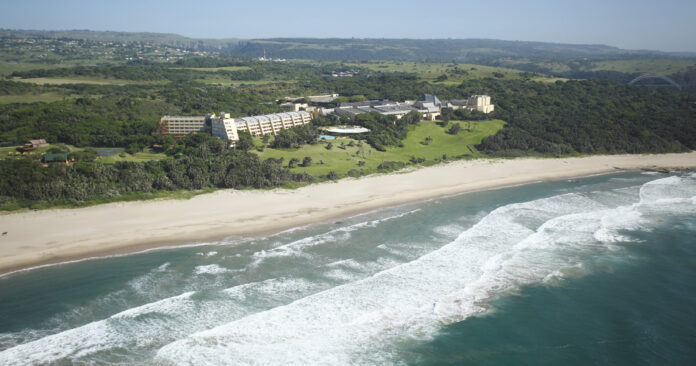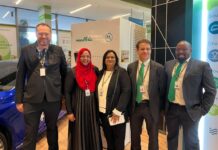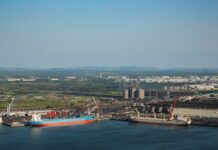Everything about energy is trending in South Africa at the moment. The Eastern Cape has attracted a large percentage of the new investments made into wind farms in the years since the nation decided to encourage private investment in the power sector, but it is battery storage, green hydrogen and ammonia that are stirring interest – and attracting investment rands – most recently.
In East London, Bushveld Minerals has built a factory to make vanadium battery electrolyte. At the Coega Special Economic Zone (Coega SEZ) an amount of $4.6-billion has been pledged by a consortium led by Hive Energy to produce green ammonia and another group of companies, including ENERTRAG South Africa, is looking into the potential of a site near Humansdorp to produce green hydrogen. The German parent of ENERTRAG has a lot of experience in hybrid wind to hydrogen power plants and is working with Sasol on aviation fuel alternatives.
Green ammonia and green hydrogen are both produced by electrolysis and the green element is supplied by that process being powered by clean or renewable energy. The difference is that green ammonia is a liquid while green hydrogen is a gas.
Various kinds of propulsion are obviously very important to the province’s big original equipment manufacturers (OEMs) such as Volkswagen South Africa, Mercedes-Benz South Africa, Ford Motor Company and Isuzu. These OEMs are keen to get certainly on what South Africa’s policy on electric vehicles is going to be. All of them have recently made large capital investments in new lines or expanded capacity.
Ford has started discussions about the creation of a new, high-speed rail link between Tshwane (where it makes Ford Rangers) and Gqeberha, the site of its engine plant. Such a link would enable it to send engines north and send completed SUVs south to one or both of the two ports that serve the city of Gqeberha.
Within the Coega SEZ, just north of the city, the Port of Ngqura, pictured, was primarily designed as a container terminal but additional capabilities are being added. The Coega Development Corporation (CDC) has been tasked with finding a developer for a new Liquid Bulk Terminal and for a new manganese terminal. Transnet has agreed that the tank farm and manganese storage facility at the Port of Gqeberha is to be moved to the Port of Ngqura. This will open up prime waterfront space to tourism and hospitality businesses.
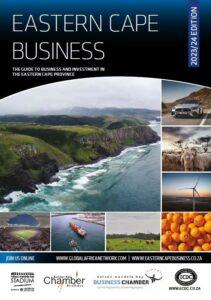 The Newlyn Group has designed and submitted a proposal for a back-of-port manganese terminal for Ngqura which would result in almost no emissions and be highly efficient. Unloading of trains and the movement of manganese would all take place in a covered environment.
The Newlyn Group has designed and submitted a proposal for a back-of-port manganese terminal for Ngqura which would result in almost no emissions and be highly efficient. Unloading of trains and the movement of manganese would all take place in a covered environment.
Infrastructure
The provincial government has identified six “mega” infrastructure projects on which to focus: N2 Wild Coast Highway, Mzimvubu Water Project, Eastern Cape Transnet initiatives, N2 Nodal Development, undersea cables and the Wild Coast SEZ.
With three ports and two large airports, the Eastern Cape is well suited to logistics activity. The Cookhouse Blaney rail branch line is now working and Transnet Freight Rail has pledged to open the line from Kroonstad to the Port of East London. A Slipway Project at Gqeberha is to be completed in the course of 2023 and the grain elevator at the Port of East London is operational again.
Having these rail connections operational and linked to the Agriport Terminal at the East London port reduces the costs of logistics and fits into a major national and provincial goal of moving goods from road to rail.
By the end of 2023, the 2Africa sea cable will be servicing the Eastern Cape’s communications networks. This will not only assist private enterprise but support the provincial government’s efforts to roll out broadband. So far, e-health and e-education platforms exist.
Both Vodacom and MTN are continuing to invest in telecommunications infrastructure. A project to connect 23 rural villages was completed by Vodacom at a cost of R34-million; a further R71-million will be spent on connecting another 86 villages. MTN allocated R600-million to protect its network and has rolled out an extensive programme of battery and generator support.
A Samsung Innovation Campus has been initiated at Walter Sisulu University. To be run by the Centre for Entrepreneurship Rapid Incubators (CFERI), the campus programme aims to transfer IT skills and help graduates start their own businesses. There will be courses on coding, programming, artificial intelligence and the Internet of Things.
The provincial government has increased funding available from its fund for young entrepreneurs, Isiqalo Youth Fund. As of December 2022, the province has spent R203-million supporting 3 900 youth-owned enterprises.
Tourism
Tourism is one of the sectors that was hit hardest by Covid-19. Many events were cancelled, foreign visitors were absent from attractions such as the Addo Elephant National Park and the Baviaanskloof World Heritage Site and guest houses and hotels struggled to make ends meet.
Although times were tough for the “Adventure Province”, there was some good news out of a sector that still retains enormous potential for growth and has been identified by the Eastern Cape Development Corporation (ECDC) as a priority sector.
The ECDC invested R2-million in attracting the TV series Survivor South Africa: Immunity Island and that investment has been shown to pay off both in monetary terms and in showcasing the spectacular Wild Coast to TV audiences. The immediate economic impact of the filming was estimated at R10-million.
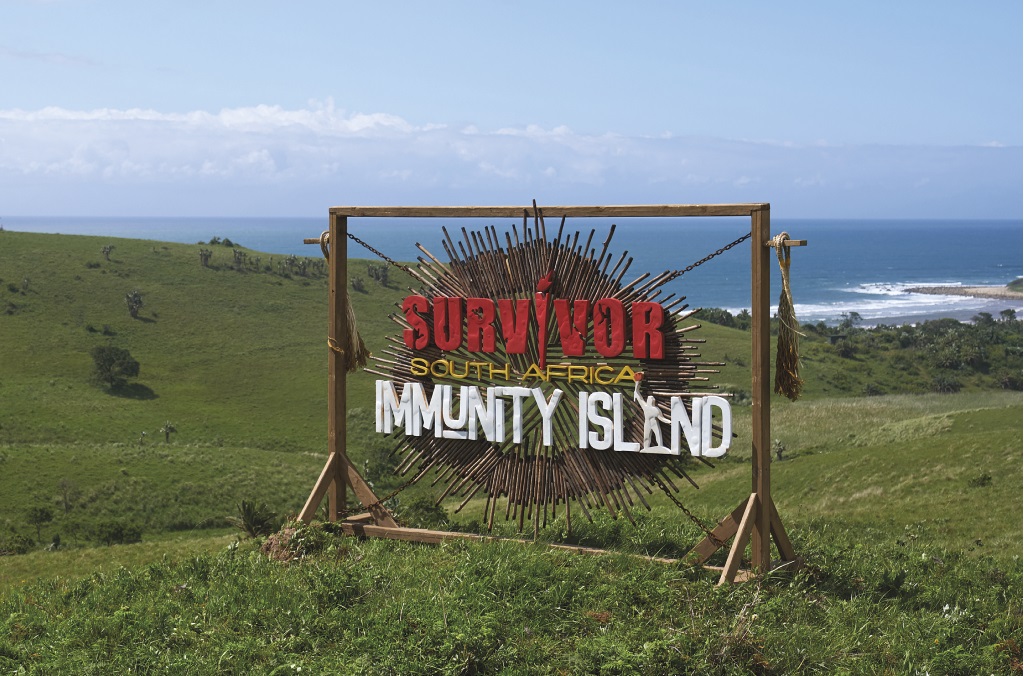
The north-eastern segment of the province is the site of a possible future national park, which would bring to five the number of national parks in the province, joining the Addo Elephant, the Camdeboo, Garden Route and Mountain Zebra National Parks. These parks not only look after animals but also protect quite distinct types of vegetation.
If the proposed Grassveld National Park is established high in the mountains above the village of Rhodes and near to the border with Lesotho, it would be South Africa’s 20th. The conservation goal behind the park is to preserve grasslands through agreements with landowners and farmers who would continue to farm the land responsibly. The land of the Batlokoa community is near the famous Naude’s Neck Pass.
As a source of clean water, the area is a hugely important resource and worth preserving for that reason too. The water that falls away from the highest point of this proposed park is described by Andrew Weiss of the WWF as “heading towards the Mzimvubu River and the Indian Ocean” while another small stream at the top of the mountain is destined to join the Orange River in the west. Weiss also described rock paintings of eland and reedbuck “with the unusual addition of dogs and a fat-tailed sheep”. The Grassveld National Park project of the South African National Botanical Institute (SANBI) has recorded 1 131 species of plant life on the iNaturalist app.
In addition to national parks, the Eastern Cape has 15 provincial nature reserves and a multitude of luxury private game reserves.
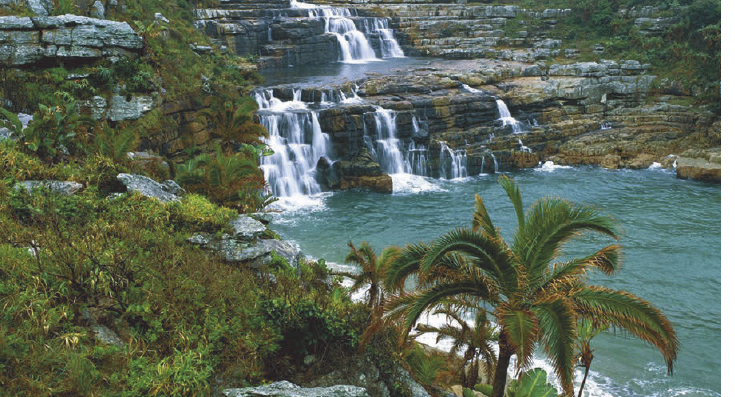
The events sector was just about to restart before the Omicron variant put a stop to all travel. This is something the Eastern Cape does well, with the National Arts Festival and a variety of sporting events such as Iron Man being hosted by the province. In the week before the Omicron variant shocked some countries into banning travel, St Francis Links successfully hosted the South African PGA Championship and showed how well multiple companies, guest houses and sponsors can work together to create something of international quality. The tournament also brought employment opportunities to the region.
This format was repeated in 2022 with a much bigger live audience and the event will again be televised in late 2023. In addition, St Francis jointly hosted with the DP World Tour (and thus attracted a global TV audience) the SDC Championship in March 2023.
Gqeberha also got in on the act of hosting a new tournament, this time the Nelson Mandela Bay Championship. The significance of this tournament in viewership terms was that it was an official DP World Challenge Tour event, where golfers can qualify for the main tour if they do well.
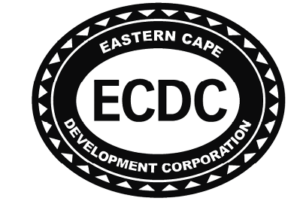 Other than tourism and film, the following sectors have been identified by the ECDC as priority sectors: agriculture and agro-processing, sustainable energy, the Oceans Economy, automotive and light manufacturing. Each of these categories is the subject of an updated economic overview in this journal (Eastern Cape Business 2023/24).
Other than tourism and film, the following sectors have been identified by the ECDC as priority sectors: agriculture and agro-processing, sustainable energy, the Oceans Economy, automotive and light manufacturing. Each of these categories is the subject of an updated economic overview in this journal (Eastern Cape Business 2023/24).
The ECDC’s mandate is to plan, finance, coordinate, market, promote and implement the development of the Eastern Cape in industry, commerce, agriculture, transport and finance, which it does through three core units.
Diversification is an important part of provincial plans. An example of this is the Global Business Services sector, previously BPO. GBS has received a boost with the establishment of an ICT Academy in Mthatha.
Enrolment in 2022 increased to 100. The centre is a partnership between the provincial government and Liquid Intelligent Technologies South Africa.
In 2021, more than 7 520 young people benefitted from the R363-million which various Sector Education and Training Authorities (SETAs) put into training programmes in the following sectors in the province: manufacturing, engineering and related services, public sector, mining, banking, chemical, local government, wholesale and retail, education, training and development and insurance.
Automotive power
The East London IDZ is one of the key locations for automotive manufacturing investment in South Africa. Read more here: Top location for manufacturers and suppliers in the automotive sector
As exporters, the Eastern Cape’s OEMs are among South Africa’s highest achievers. Volkswagen Isuzu, Ford and Mercedes-Benz routinely ship tens of thousands of vehicles and engines to every part of the globe. Quite often, the East London or Gqeberha factory will be mandated to fulfil a particular order for a left-handed model, for example, in a specific country.
Isuzu recently launched the first locally-engineered and produced seventh-generation D-MAX bakkie, using for the first time a new body shop at the Struandale manufacturing plant and a new chassis assembly line at the company’s Kempston Road facility.
The initial R10-billion that Mercedes-Benz invested in making its East London factory ready for the production of the latest C-Class was supplemented in 2021, when the first vehicles rolled off the floor, by news that an additional R3-billion was to go into building three new assembly lines, a new body shop and more advanced robots.

Ford Motor Company’s Struandale engine plant in Gqeberha will receive R600-million to prepare the plant to make the 3.0L V6 turbodiesel engine for the company’s Ford Ranger, which is put together in Tshwane. This amount, which includes upgrades to two existing engine lines, is over and above the company’s national commitment of R15.8-billion to be spent on the Silverton assembly plant and various factories that supply the company.
By the start of 2018, Volkswagen South Africa had spent more than R6.1-billion on its plant in Kariega, an investment that enabled the manufacture of more than 400 000 sixth-generation Polos by 2021. More than 80% of these vehicles were exported.



